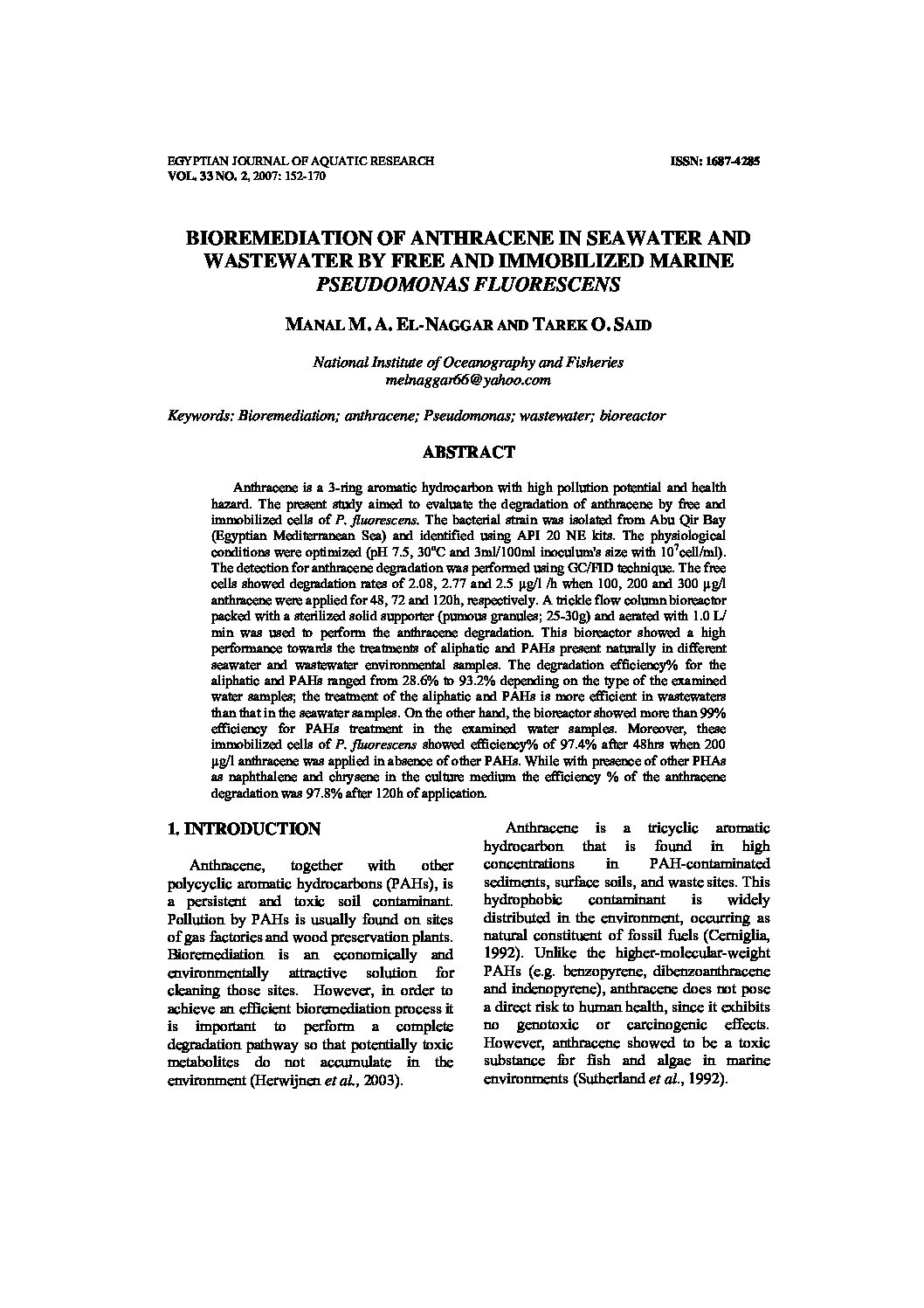Categories
vol-33BIOREMEDIATION OF ANTHRACENE IN SEAWATER AND
WASTEWATER BY FREE AND IMMOBILIZED MARINE
PSEUDOMONAS FLUORESCENS
MANAL M. A. EL-NAGGAR AND TAREK O. SAID
National Institute of Oceanography and Fisheries
[email protected]
Keywords: Bioremediation; anthracene; Pseudomonas; wastewater; bioreactor
ABSTRACT
Anthracene is a 3-ring aromatic hydrocarbon with high pollution potential and health
hazard. The present study aimed to evaluate the degradation of anthracene by free and
immobilized cells of P. fluorescens. The bacterial strain was isolated from Abu Qir Bay
(Egyptian Mediterranean Sea) and identified using API 20 NE kits. The physiological
conditions were optimized (pH 7.5, 30o
C and 3ml/100ml inoculum’s size with 107
cell/ml).
The detection for anthracene degradation was performed using GC/FID technique. The free
cells showed degradation rates of 2.08, 2.77 and 2.5 µg/l /h when 100, 200 and 300 µg/l
anthracene were applied for 48, 72 and 120h, respectively. A trickle flow column bioreactor
packed with a sterilized solid supporter (pumous granules; 25-30g) and aerated with 1.0 L/
min was used to perform the anthracene degradation. This bioreactor showed a high
performance towards the treatments of aliphatic and PAHs present naturally in different
seawater and wastewater environmental samples. The degradation efficiency% for the
aliphatic and PAHs ranged from 28.6% to 93.2% depending on the type of the examined
water samples; the treatment of the aliphatic and PAHs is more efficient in wastewaters
than that in the seawater samples. On the other hand, the bioreactor showed more than 99%
efficiency for PAHs treatment in the examined water samples. Moreover, these
immobilized cells of P. fluorescens showed efficiency% of 97.4% after 48hrs when 200
µg/l anthracene was applied in absence of other PAHs. While with presence of other PHAs
as naphthalene and chrysene in the culture medium the efficiency % of the anthracene
degradation was 97.8% after 120h of application.







